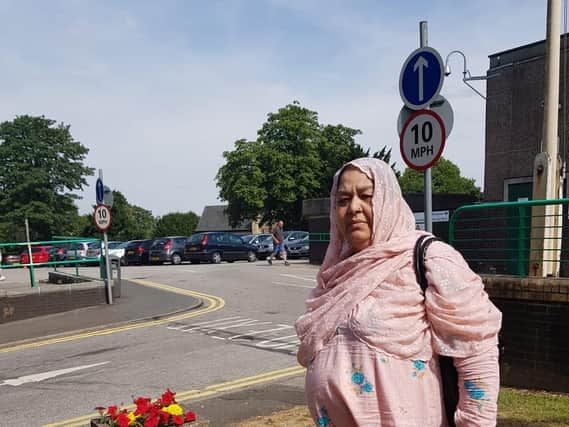Coroner considering referring Highways England to Crown Prosecution Service over smart motorway death


Grandmother Nargis Begum, from Sheffield, was the passenger in a Nissan Qashqai car, driven by her husband, Mohammed Bashir, 67, which broke down on the M1 in South Yorkshire, near Woodhall Services, in September 2018.
This section is a so-called smart motorway, with no hard shoulder.
Advertisement
Hide AdAdvertisement
Hide AdMrs Begum, a mother-of-five and grandmother-of-nine, had exited the car and was waiting for help when another vehicle collided with the Nissan, causing it plough into her.


At a pre-inquest review in Doncaster on December 21, coroner Nicola Mundy heard how 16 minutes and 21 seconds elapsed between the Nissan breaking down and the collision.
And she said it was a further six minutes and 15 seconds before warning signs were activated.
Ms Mundy said this made a total of 22 minutes and 36 seconds between the breakdown and warnings being displayed.
Advertisement
Hide AdAdvertisement
Hide AdThe coroner said: “I want to know why, essentially. It’s as simple as that.”
Ms Mundy said she was considering whether to adjourn the inquest in order to make a referral to the CPS about any potential homicide.
She said this included whether Highways England had a case to answer for either corporate manslaughter or gross negligence manslaughter.
The coroner said she had not yet made a decision about this referral and wanted to give lawyers for the government-owned company time to prepare a response before a further hearing in February.
Advertisement
Hide AdAdvertisement
Hide AdMs Mundy said she understood the CPS had decided against prosecuting the driver of the car which crashed into the Nissan.
She said she was also considering whether to refer this decision back to the CPS based on the evidence she had seen.
The coroner said this included one witness who said the car was travelling at about 90mph and also that 153 other vehicles, including lorries, had managed to safely negotiate past the stranded Nissan.
The coroner referred to a similar case involving the death of two men on a smart motorway stretch of the M1 motorway a few miles further north, near Sheffield.
Advertisement
Hide AdAdvertisement
Hide AdIn that case, lorry driver Prezemyslaw Szuba, 40, was prosecuted for causing the deaths by careless driving of Jason Mercer, 44, and Alexandru Murgeanu, 22 and subsequently jailed for 10 months.
After that case, Mr Mercer’s widow, Claire, who is a prominent campaigner against smart motorways, said she believed the wrong person was in dock.
Ellen Robertson, representing Mrs Begum’s family on Monday, said her husband and children believed the relevant referrals to the CPS should be made.
Ms Mundy said on Monday that the inquest would be a so-called Article 2 case, which means that it will consider the state’s responsibility for preserving a citizen’s right to life and, as such, will have a wider scope than a normal inquest.
Advertisement
Hide AdAdvertisement
Hide AdBut she said the full scope of the inquest would be decided next year.
The coroner said she needed a lot more information about smart motorways from Highways England to build a full picture. She listed a range of topics from the rationale behind the policy, through to how safety refuges were spaced and details of previous incidents.
The case was adjourned until February 11 for a further pre-inquest review.
AA president Edmund King said: “The coroner is absolutely right to question why it took 22 minutes and 36 seconds between the breakdown and warning signs going live.
Advertisement
Hide AdAdvertisement
Hide Ad“The AA has been raising similar questions for a number of years and last year revealed that on average it took 17 minutes and one second for a vehicle to be spotted broken down or stopped in a live lane.
“This tragic case and too many others, are exactly why we have campaigned for doubling the number of emergency refuge areas to every three quarters of a mile and for stopped vehicle detection technology to be fitted across the network.
“The Transport Secretary agreed to these demands in an 18-point plan last March which we welcomed and the coroner’s questions reinforce the importance of that plan being implemented as fast as possible.”
Comment Guidelines
National World encourages reader discussion on our stories. User feedback, insights and back-and-forth exchanges add a rich layer of context to reporting. Please review our Community Guidelines before commenting.